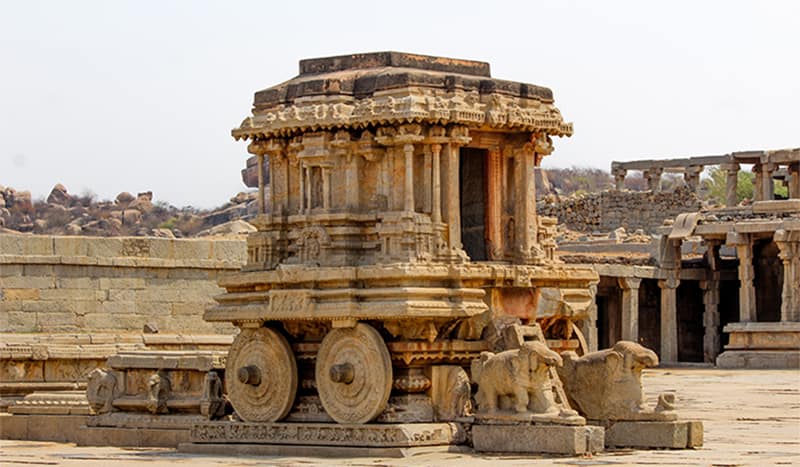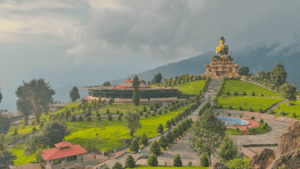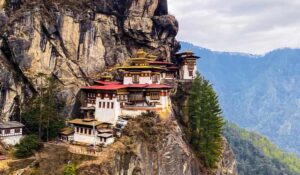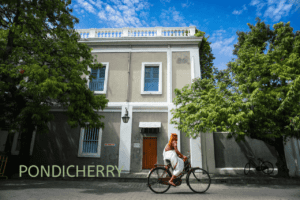Hampi is located in Karnataka, India. This can be a unique place for you in terms of history, culture, and nature. Its captivating ruins, ancient temples, and unique landscape of giant boulders make it a destination that has piqued the interest of explorers over the years. It is no surprise that Hampi is a UNESCO World Heritage Site.
In this blog post, we will talk about the Hampi travel guide. We will also discuss Hampi’s rich history, top attractions, and the best time to visit Hampi.
History of Hampi
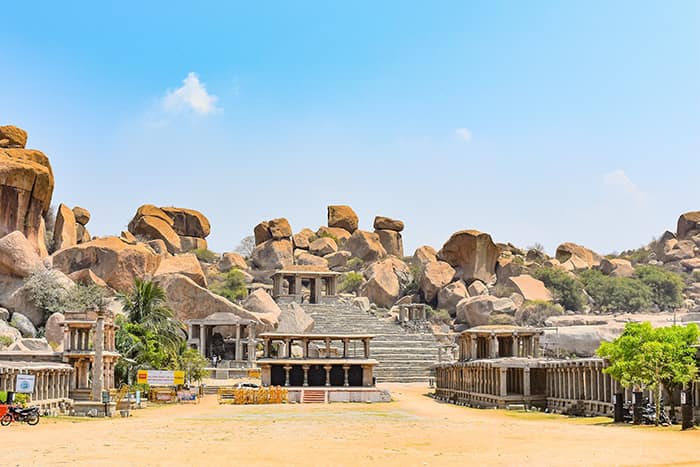
Hampi is a popular tourist destination in India. It is located in the Karnataka state, on the banks of the Tungabhadra River. The ruins of Hampi are all that remain of the Vijayanagara Empire, which was one of the most powerful Hindu empires in India.
The Vijayanagara Empire was founded in 1336 by Harihara I and Bukka I, two brothers who were commanders in the Hoysala army. The empire reached its peak in the 15th century, under the rule of Krishnadevaraya. At this time, Hampi was a thriving metropolis, with a population of over 500,000 people. The city was home to magnificent temples, palaces, and other architectural wonders.
The Vijayanagara Empire declined in the 16th century, due to a combination of factors, including internal conflict and external threats. In 1565, the kingdom was destroyed by an alliance of Muslim sultanates in the Battle of Talikota. The city of Hampi was sacked and destroyed, and its ruins have been left to the ravages of time.
Today, Hampi is a popular tourist destination, attracting visitors from all over the world. The ruins of the city are a reminder of its former glory, and they offer a fascinating glimpse into the history of the Vijayanagara Empire.
Must-Visit Places in Hampi
1. Virupaksha Temple
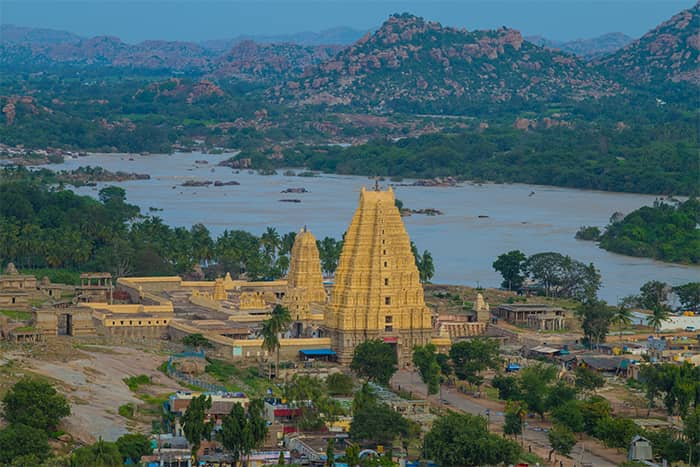
The Virupaksha Temple is the biggest and most prominent temple in Hampi. It is dedicated to Lord Virupaksha, a form of Shiva. The temple was built in the 14th century and is a UNESCO World Heritage Site.
The temple complex is spread over 100 acres and includes many different structures, including the main temple, many smaller shrines, and a pillared hall. The main temple is a towering structure with five towers. The walls of the temple are ornamented with elaborate sculptures of gods, goddesses, and other legendary characters.
The Virupaksha Temple is a popular pilgrimage destination and is also a major tourist attraction. It is a must-see for anyone visiting Hampi.
2. Vijaya Vittala Temple
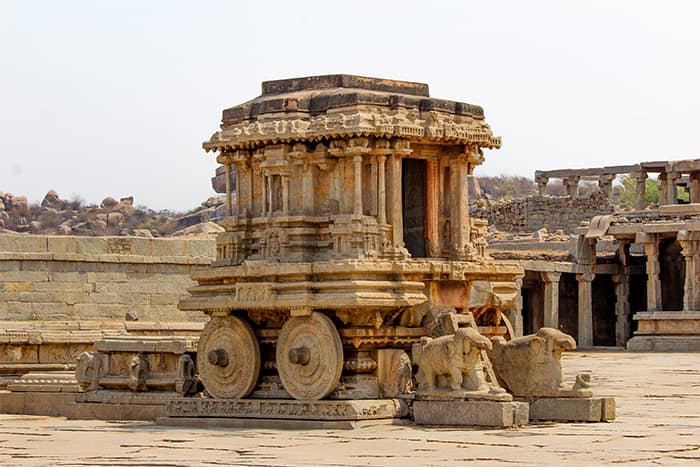
The Vijaya Vittala Temple is one of the most popular tourist attractions in Hampi. It is dedicated to Vittala, a form of Vishnu. The temple is known for its intricate stone carvings, including the famous Stone Chariot.
The Stone Chariot is a 16-foot-tall chariot made of granite. It is pulled by 12 bulls and driven by two horses. The chariot is covered in intricate carvings of gods, goddesses, and animals.
The temple also features some other impressive sculptures, including a large Nandi bull, a 10-foot-tall dancing Shiva, and a musical pillar that produces different notes when tapped.
The Vijaya Vittala Temple is a UNESCO World Heritage Site and a must-see for any visitor to Hampi.
3. Hazara Rama Temple
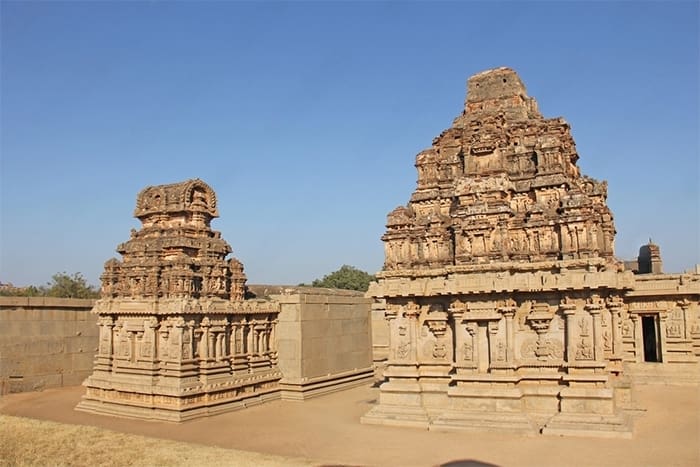
The Hazara Rama Temple is a 15th-century Hindu temple dedicated to Rama, an incarnation of Vishnu. It is located in the Royal Enclosure of Hampi, a UNESCO World Heritage Site. The temple is named “Hazara Rama” (meaning “thousand Ramas”) because of the many bas-reliefs on its walls that depict scenes from the Ramayana, an epic poem about the life of Rama.
The temple is a beautiful and intricate example of Vijayanagara architecture. It features several other sculptures, including a large Nandi bull, a dancing Shiva, and a musical pillar. The Hazara Rama Temple is a popular tourist destination in Hampi and is a testament to the artistic and architectural skills of the Vijayanagara Empire.
4. Lotus Mahal
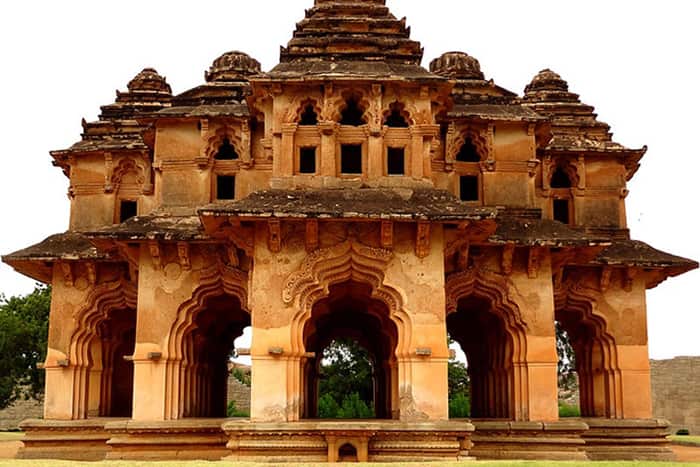
The Lotus Mahal is a two-storey palace located in the Zenana Enclosure, a complex of palaces and temples that was once the residence of the women of the Vijayanagara Empire. It is named after its lotus bud-like shape.
The Lotus Mahal is made of red sandstone and white marble. It has a central dome and eight smaller domes. The walls are decorated with intricate carvings of flowers, animals, and birds.
The Lotus Mahal is a beautiful and unique example of Vijayanagara architecture. It is a popular tourist destination in Hampi and is a reminder of the former glory of the Vijayanagara Empire.
5. Mahanavmi Dibba
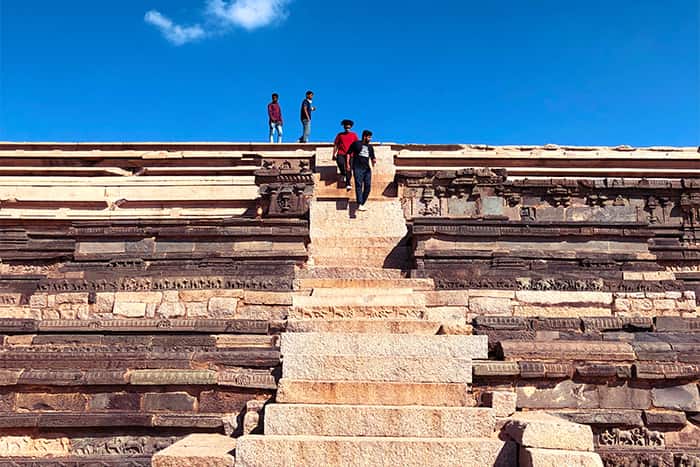
Mahanavami Dibba is a large stone platform located within the Royal Enclosure of Hampi, India. It is also known as Dasara Dibba.
The platform is about 12 meters high and has three levels. The first level is the largest, the second level is smaller, and the third level is the smallest. The platform is made of granite and is decorated with intricate carvings of animals, birds, and other figures.
Mahanavami Dibba was built in the 15th century by King Krishnadevaraya, the ruler of the Vijayanagara Empire. It was used as a platform for the king to watch the Dasara festival, a nine-day Hindu festival that celebrates the victory of Rama over the demon Ravana.
Today, Mahanavami Dibba is a popular tourist destination in Hampi. It is a reminder of the former glory of the Vijayanagara Empire and its rich cultural heritage.
6. Hampi Bazaar
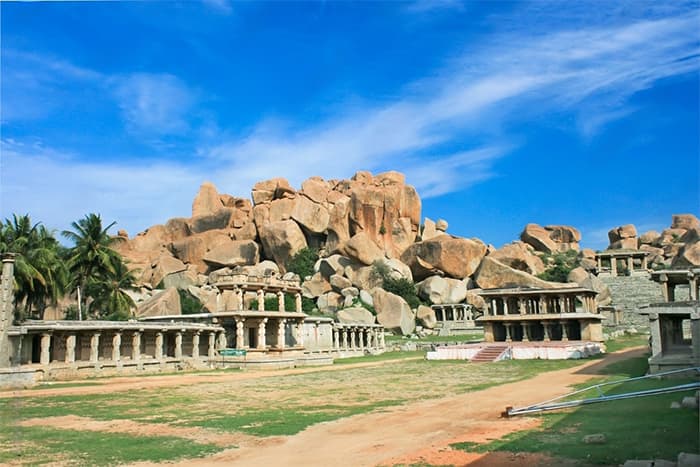
The Hampi Bazaar is a long street lined with shops selling souvenirs, handicrafts, and local food. It is located in front of the Virupaksha Temple, a major Hindu temple in Hampi.
The bazaar was once a thriving market during the days of the Vijayanagara Empire when merchants from all over the world would come to trade. Today, it is a popular tourist destination and a great place to experience the local culture.
7. Queen’s Bathhouse
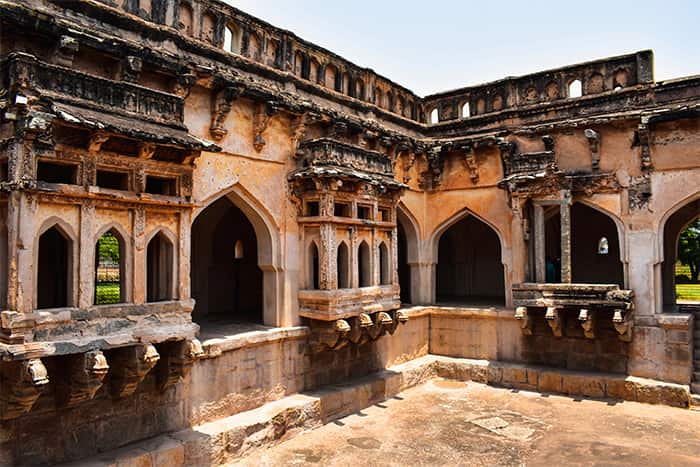
The Queen’s Bathhouse is a beautifully preserved 16th-century bathhouse in Hampi. It is made of granite and has a sunken bath in the center, surrounded by a colonnade with arches and pillars. The walls are decorated with intricate carvings of animals, birds, and flowers. The bathhouse was used by the royal family for bathing and other leisure activities.
8. Matanga Hill
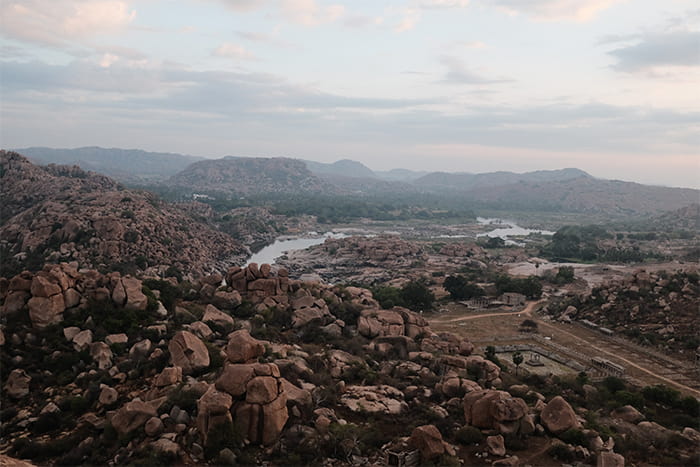
Matanga Hill is a small hill located in the center of Hampi. It is the highest point in Hampi and offers stunning views of the surrounding ruins.
The hill is named after Sage Matanga, who is said to have lived on the hill in ancient times. The hill is also mentioned in the Hindu epic Ramayana, where it is said that Sugriva, the monkey king, hid in a cave on the hill to escape from his brother Vali.
There is a small temple on the top of Matanga Hill dedicated to Sage Matanga. The temple is in ruins, but it is still a popular place for pilgrims and tourists.
The climb to the top of Matanga Hill is challenging, but the views from the top are worth it. The best time to visit Matanga Hill is early in the morning or late in the afternoon when the light is good.
9. Agastya Hills
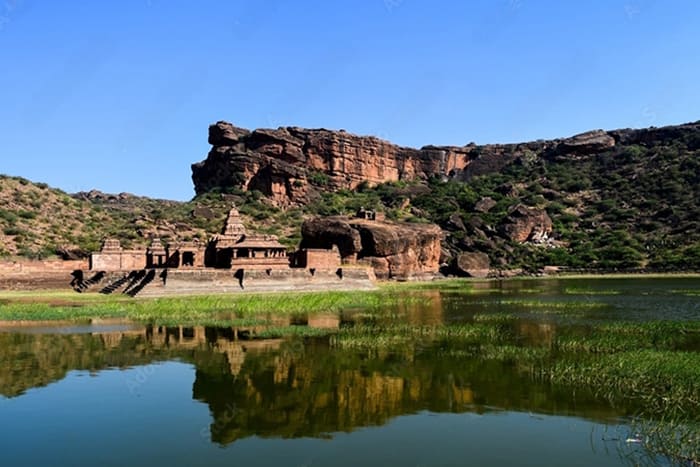
The Agastya Hills are a popular destination for trekking, hiking, and bird watching. The hills are also home to many temples and caves.
One of the most popular trekking trails in the Agastya Hills is the trek to the top of Gurudutt Mala, the highest peak in the range. The trek is about 6 kilometers long and takes about 3-4 hours to complete.
Another popular trekking trail is the trek to the Agastya Guha, a cave said to have been the home of Sage Agastya. The trek is about 3 kilometers long and takes about 2 hours to complete.
The Agastya Hills are also home to many temples, including the Agastya Temple, the Gurudutt Temple, and the Mahadeva Temple.
The Agastya Hills are a beautiful and diverse ecosystem. They are home to a variety of plants and animals, including the lion-tailed macaque, the Malabar civet, and the Nilgiri tahr.
10. Anegundi Village
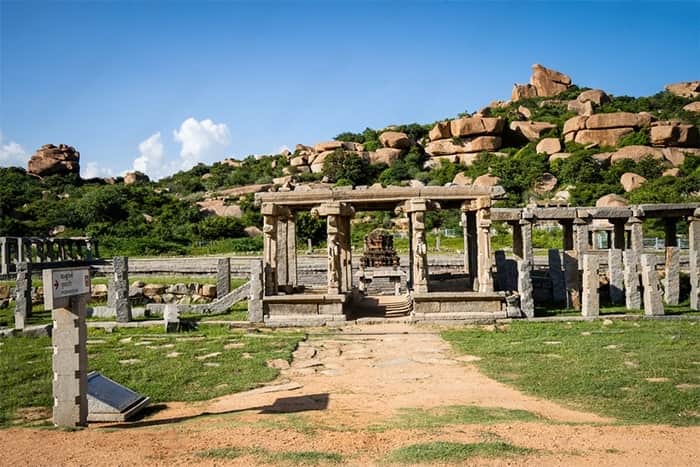
Anegundi is a village located on the banks of the Tungabhadra River, about 5 kilometers from Hampi. It is believed to be the oldest of the two settlements and was once the capital of the Kishkindha kingdom, mentioned in the Hindu epic Ramayana.
Anegundi is home to many historical and religious sites. Anegundi is a popular tourist destination and is known for its laid-back atmosphere and beautiful scenery. It is a great place to relax and escape the hustle and bustle of Hampi.
11. Elephant Stables
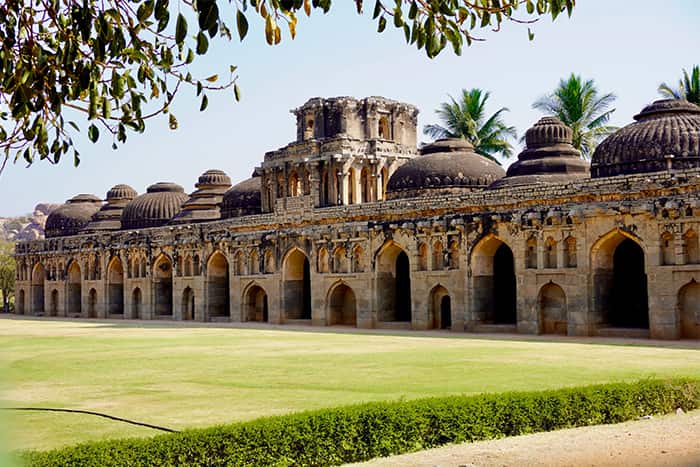
The Elephant Stables in Hampi is a long building with 11 domed chambers that once housed the royal elephants of the Vijayanagara Empire. The stables are a reminder of the empire’s power and wealth, and the importance of elephants in Indian culture.
Elephants were used for transportation, warfare, and religious ceremonies. The stables are a popular tourist destination and a fascinating glimpse into the past.
12. Tungabhadra River
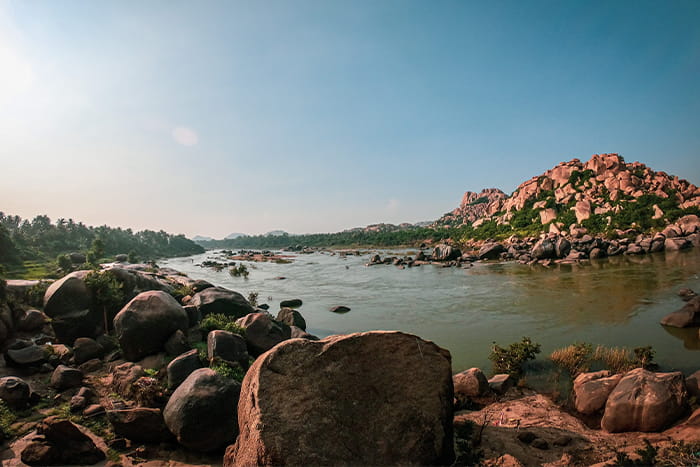
In the 14th century, Hampi became the capital of the Vijayanagara Empire. The empire was a major power in southern India, and it reached its peak in the 16th century.
The Vijayanagara rulers built many temples, palaces, and other structures in Hampi. They also built irrigation systems to bring water from the Tungabhadra River to the city.
The Tungabhadra River continued to be an important part of Hampi’s life after the fall of the Vijayanagara Empire. The river is still a popular tourist destination, and it is a reminder of the city’s rich history and culture.
13. Daroji Sloth Bear Sanctuary
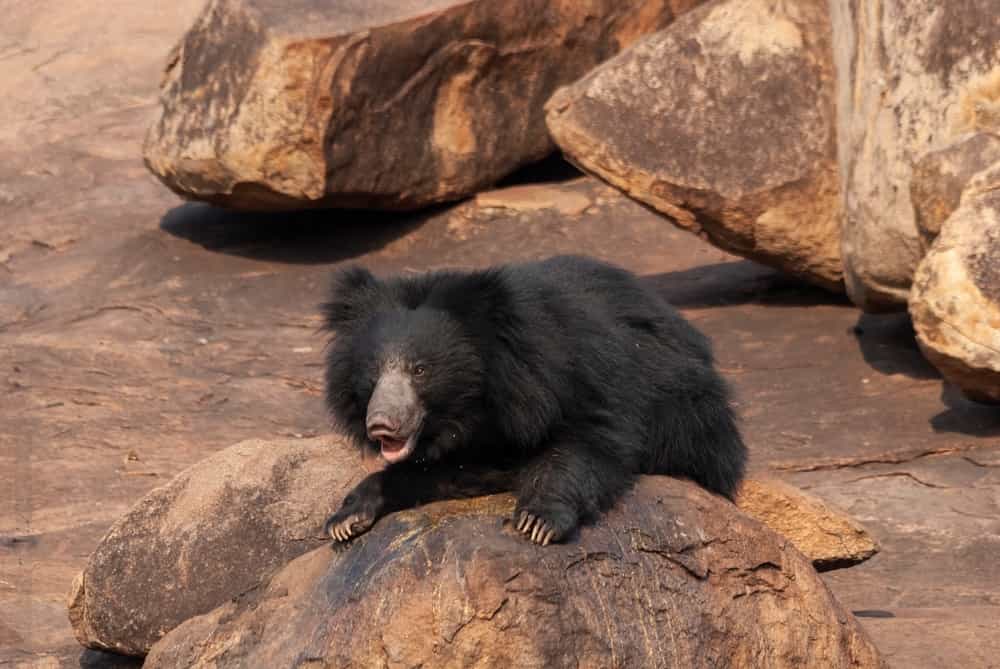
The Daroji Sloth Bear Sanctuary is a 375-square-kilometer wildlife sanctuary located in the Bellary district of Karnataka, India. It is home to a large population of sloth bears, as well as other animals such as leopards, hyenas, and jackals.
The sanctuary was established in 1974 to protect the sloth bear, which is an endangered species. The sanctuary is open to visitors, and there are many activities available, such as hiking, camping, and wildlife viewing.
The best time to visit the sanctuary is during the dry season, from October to May. This is when the animals are more active and easier to see.
When to Visit Hampi
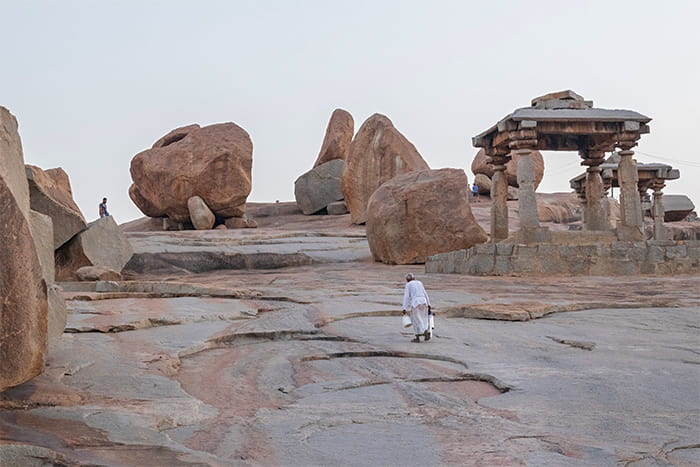
The winter season is from October to February. This is when the weather is most pleasant, with average temperatures ranging from 20 to 30 degrees Celsius. The days are sunny and dry, and the nights are cool and crisp.
The monsoon season in Hampi runs from June to September. During this season, the weather is hot and humid, and there is a lot of rain. The ruins can be slippery and muddy, and some roads may be impassable. However, the monsoon also brings lush greenery to the landscape, and the waterfalls are at their fullest.
If you are planning to visit Hampi during the monsoon season, be sure to pack accordingly and be prepared for wet weather.
How to Get There
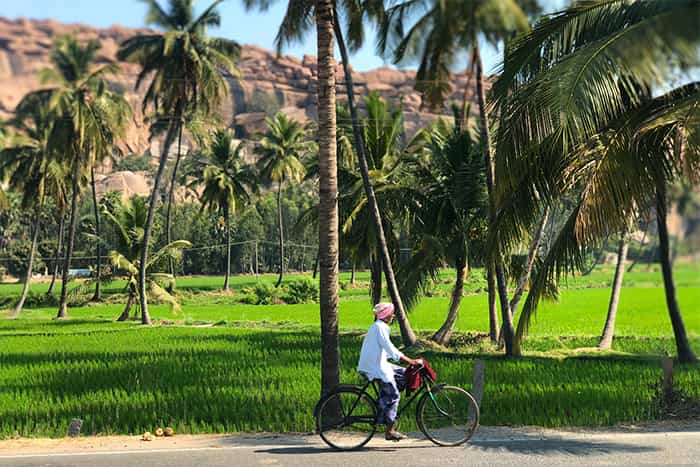
By air: The nearest airport is in Bellary, which is about 60 kilometers from Hampi. There are daily flights from Bangalore and Hyderabad to Bellary. From the airport, you can take a taxi or bus to Hampi.
By train: There is a railway station in Hospet, which is about 13 kilometers from Hampi. There are trains from Bangalore, Hyderabad, and other major cities to Hospet. From the station, you can take a taxi or bus to Hampi.
By bus: There are frequent buses from Bangalore, Hyderabad, and other major cities to Hampi. The buses stop at the Hampi bus stand, which is located in the town of Hampi.
By car: If you are driving from Bangalore, take the NH48 highway to Hospet. From Hospet, follow the state highway to Hampi.
The best way to get to Hampi will depend on your budget and preferences. If you are on a tight budget, the bus is the cheapest option. If you want to avoid the hassle of public transportation, you can take a taxi or hire a car.
Once you arrive in Hampi, you can get around by walking, cycling, or taking a rickshaw. The ruins are spread out over a large area, so it is best to be on foot if you want to explore them all.
Additional Tips for Visiting Hampi
- Hire a guide to help you navigate the ruins and learn about the history of the city.
- Be aware of the monkeys in Hampi. They can be violent and steal food and things.
- Take a boat ride on the Tungabhadra River to get a different perspective of the ruins.
- Visit the Hampi Bazaar to buy souvenirs and handicrafts.
- Sample the local cuisine, which is a mix of Indian and South Indian dishes.
- Stay in a local homestay to experience the culture of Hampi firsthand.
Related Post: 9 Things to Do in Kerala That Will Make You Fall in Love

